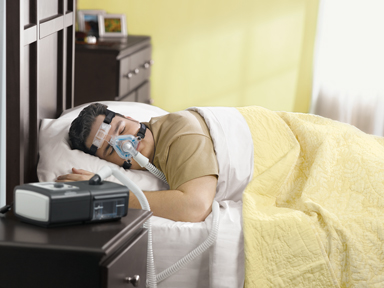Last updated on May 10th, 2021 at 03:59 pm
Your CPAP Mask
There are numerous ways in which you can counteract the effects of obstructive sleep apnoea (OSA), and the majority of these involve the use of a continuous positive airway (CPAP) machine and mask.
A CPAP machine will help to increase the air pressure provided to your nose and mouth. The air pressure enables your airways to remain open, and consequently, you can obtain the oxygen and the quality sleep that you have otherwise been lacking.
While these CPAP devices have indeed come a long way in terms of design, ergonomics and comfort, some users still have a fair amount of difficulty when trying to adjust to the mask.
These professional tips should help you adapt to the mask
Daytime Usage
We are all creatures of habit, so it only makes sense that one of the best ways to become acclimatised to the mask is to have it nearby throughout the day. We need to keep in mind that the CPAP mask can feel somewhat strange during the overnight hours. Thus, some users are prone to remove the hose and similar equipment while asleep. Obviously, this will prevent pressurised air from reaching your nose and mouth, effectively eliminating any benefits that you might have otherwise enjoyed.
Try to incorporate the CPAP machine into your routine
For example, you can choose to place the plastic hose and cup near your face while breathing normally (without attaching any of the associated straps). Perform this for approximately one minute at a time if possible.
You may then activate the CPAP machine while holding the tubing up to your face. This is an excellent way to become acclimated to the higher levels of air pressure that will be present during the overnight hours.
Breathe normally for between one and two minutes. If you experience any initial discomfort, simply try again after a while. Once again, perform this activity without the use of any straps.
Assuming that you have grown comfortable with the first two steps, you can then choose to wear the mask (including the straps) for blocks of time throughout the day.
Try to schedule moments when you are relaxing (such as when watching television or reading a book). The main intention behind this strategy is to allow your body to adjust to the physical presence of the mask and machine, its attachments and any ambient noises that may be present.
Adopt a Staged Approach
Let us assume for a moment that you have performed all of the suggestions outlined above and yet you still have difficulty sleeping. This is also quite normal for those who have only recently been diagnosed with sleep apnoea. Most experts agree that a staged approach is the best method to employ during the overnight hours. Let us look at what this strategy encompasses.
If you often take naps throughout the day, these can represent an excellent opportunity to become more acclimated to the presence of your CPAP machine and mask. As sleeping times tend to be much shorter, the chances of inadvertently removing or otherwise unconsciously adjusting the apparatus reduced.
This habit also “primes” your mind for what is in store when sleeping at night. Also, we should mention that you do not necessarily have to wear the unit for the entire duration of your daytime nap. You can start with shorter naps (perhaps 30 minutes at a time) before gradually building up your tolerance. There are likewise a handful of third-party mobile phone applications which can help to track your progress. This is a unique way to remain motivated.
Staging Overnight Wearing
The same is true regarding the overnight hours. Staged sleeping with a CPAP machine will enable your body to adjust to its presence slowly. If relevant, you could also choose to keep a diary to record how you slept. You can note the times you awoke and if it was due to the mask. The chances are high that the frequency of these incidents will begin to decrease.
Getting help from others
A final consideration involves obtaining support from friends and family members. Many studies have shown that those who feel that others emotionally bolster them are capable of fully embracing this treatment technique. In other words, never be afraid to ask for help or a few words of encouragement.
Set Up the Machine for Bedtime
Try to make sure your CPAP machine is set up correctly so that it can be immediately activated. Here is a short checklist to follow:
- Make sure that all hoses and tubing have been cleaned and are ready for use.
- If the unit is equipped with a humidifier, ensure that distilled water is present within the reservoir.
- Check the machine for any issues such as clogged filters or dirt. If so, cleaning should take place in the morning as opposed to the evening.
Final thoughts and suggestions
Do not become frustrated if you find it difficult to adjust to the presence of this type of mask. Simply remaining patient and appreciating the benefits that it can provide; this will supply you with the motivation required to get into the habit.
Also, be sure to speak with your doctor or sleep apnoea specialist to determine if any unique configurations may be available. Talking to us or your doctor is also an excellent way to obtain additional advice and guidance. There is no doubt that you will finally be able to get the rest that you have been so desperately searching.




